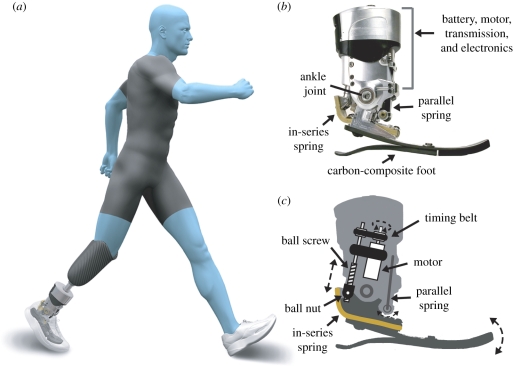Figure 1.
Bionic ankle–foot prosthesis. (a) The bionic prosthesis attaches to the socket via a pylon and has a mass of 2 kg, equivalent to the biological foot and partial shank of an 80 kg person [39]. (b) The prosthesis includes an actuator in-series with a carbon-fibre leaf spring, in parallel with a unidirectional leaf spring, and heel and forefoot leaf springs that provide elasticity. (c) A series-elastic actuator performs negative and positive work. The actuator comprises a 200 W DC brushless motor (Maxon EC-Powermax 30) and ball-screw transmission (Nook 14 × 3 mm) in series with a carbon-composite leaf spring. A 0.22 kg Lithium-polymer rechargeable battery provides energy to the motor. The prosthesis is 67% efficient; approximately 30 J of electrical energy produce 20 J of net positive work during the stance period of walking, the typical energy requirement for an 80 kg person walking at 1.75 m s−1 [35]. A charged battery produces 4000–5000 steps, sufficient to walk 4–5 km at 1.75 m s−1 and exceeding the 3060 ± 1890 steps per day typically walked by an active PWA [40].

